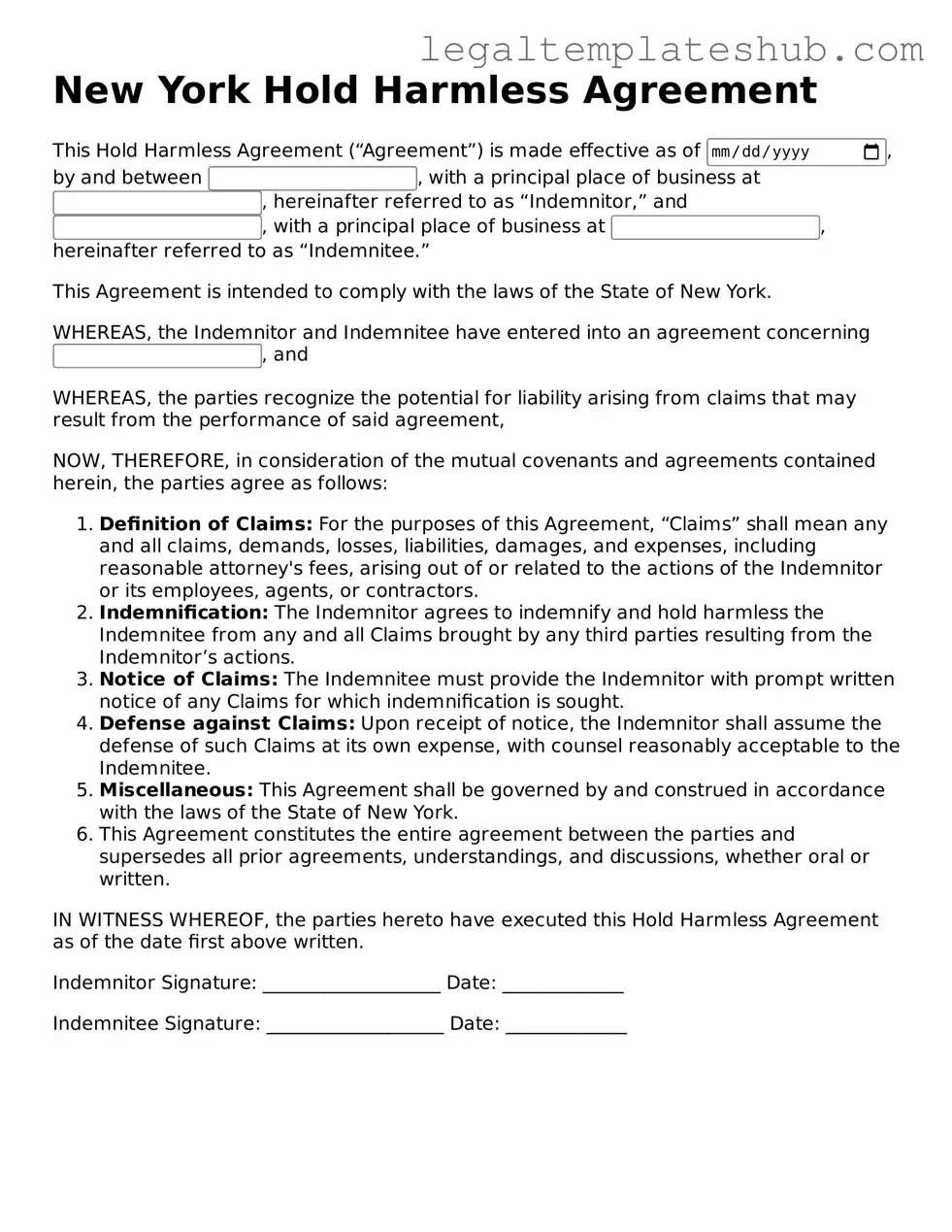Printable Hold Harmless Agreement Document for New York
The New York Hold Harmless Agreement is a legal document that protects one party from liability for any damages or injuries that may occur during a specific activity or event. This form outlines the responsibilities of each party and ensures that the party being held harmless is not held accountable for unforeseen incidents. To safeguard your interests, consider filling out the form by clicking the button below.
Access Editor
